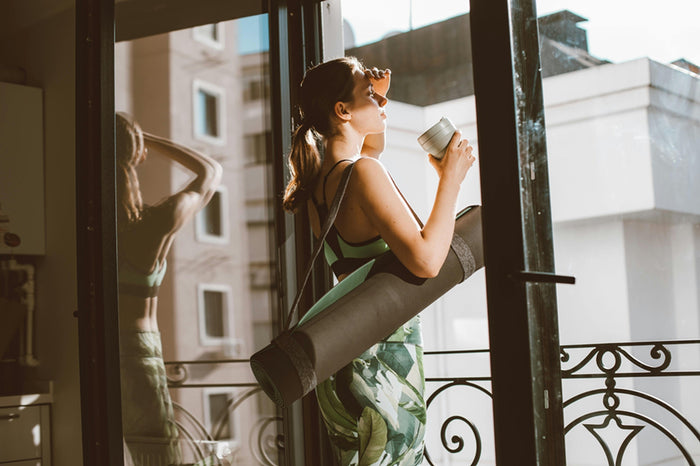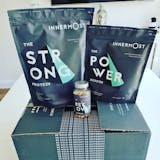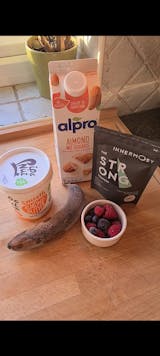Balance ball, stability ball, body ball, yoga ball…these are some of the many names associated with the famous exercise ball. Fitness trends come and go, with us human beings looking for new and improved ways to get the most out of all workouts, including consuming protein powders just like our Fit Protein, and choosing the best running trainers. The exercise ball in particular is a fad that has stuck, with its popularity sweeping through homes, gyms, physical therapy sessions and even workplaces with the rise of exercise ball chairs – crazy huh? These rounded inflated circles are commonly constructed from a soft and elastic polyvinyl chloride (PVC) cover and then inflated with air to achieve its spherical shape. There’s no one size fits all here, with this fitness equipment available in a range of different dimensions. There are five in total: 45cm, 55cm, 65cm, 75cm and 85cm to be exact, but this can vary from company to company. To reap the most benefits, choosing the right balance ball is paramount, and for those of you who just don’t know where to begin, professionals have outlined handy tips that can make the exercise ball shopping process easy peasy.
The guidelines are as follows – when sitting upright on the filled circle, individuals must be able to:
- Place their feet flat on the floor with their weight distributed evenly.
- Keep their knees level or just slight lower than the pelvis, creating an angle of 90 degrees at the hips and knees.
- Keep their pelvis, shoulders, and ears in a vertical line with the body not leaning in any direction as a counterbalance.
Exercise ball benefits
Although there are many purposes for an exercise ball, the main of these is to improve balance, muscle tone and core strength. Not only are they inexpensive and easily accessible, but they are also lightweight, durable and can be used at home. So for those who prefer an at-home workout and have limited space available, sticking to a regular exercise ball regime could be the perfect option. Moving on, from low-impact aerobic exercises to strength training routines, the humble yoga ball has many other proven benefits:
- Posture improvement: We lead busy lives and for those of us who sit in front of a computer for work, we spend most of our waking time sat slouched on a chair. Using an exercise ball can help to loosen our back and neck muscles, uncramping and relieving joints, which in return will increase posture stability and reduce back pain. Looking after your back is important – so yoga ball exercises can rid that dreaded back pain and make it the thing of the past. If you are working from home, why not spend some time away from the screen incorporating posture strengthening exercises into your lunch break.
- Improves flexibility: Keeping flexible tends to be a shared goal when embarking on a fitness journey - as we grow, our muscles stiffen with the free movement we once had when we were younger becoming progressively laboured as time goes on. Using an exercise ball whilst working out is a fantastic way to test flexibility as we can push our body into new positions to loosen up muscles, targeting areas we may not use within our daily routine. In particular, warming up our muscles first before committing to a full-blown workout can increase flexibility and reduce the risk of injury. Afterall, exercising is meant to help the body and not ruin it.
- Strengthens the core muscles: When used properly, a body ball helps you to connect with your centre of gravity, activating the core’s stabiliser muscles. Due to the unstable surface of the ball, our bodies use extra effort to keep balanced whilst performing the exercise. Strengthening one’s core helps to protect the whole body including the spine, pelvis, hips, and shoulders.
- Improves balance: Linking to the core, just simply sitting upon an air-filled ball helps to engage the stabiliser muscles. To stay upright and not fall off, we need to use our abdominal and back muscles to keep balanced. Interestingly enough, if your body has a muscle imbalance, this can actually prevent you from growing more strength, so a stability ball may just be your best friend here.
- Expands motion: Lastly, for those who are seeking a difficult exercise regime and like to take on new challenges, this fitness equipment will ensure movements are expanded enabling new heights and positions. Your regime will be elevated, taking on a different approach than just relying on an on-floor exercise mat. Not only that, but there is a plethora of new exercises to get to grips with – no two workout sessions need to be the same with a fitness ball.
Exercise ball workouts for beginners
Lower body
- Hamstring Curls
- Focuses on glutes, hamstrings and core
Step 1: First lie on your back with your arms placed by your sides, making sure your palms are facing down here. Then bend your knees and place both your feet up on the yoga ball making sure these are spread out in line with your hips.
Step 2: Next, lift your hips off the ground, squeezing both your glutes and hamstrings as you go, and form a straight diagonal line from your shoulders through to your knees. Now, roll the ball away from you by extending your legs fully out, then bend your knees to roll the ball back towards you, keeping your hips extended as high as possible. Lower your hips back down to the ground here and repeat.
- Ball squat
- Focuses on quads, glutes, hamstrings, hip flexors and core
Step 1: To start, place the stability ball up against a wall – either at the gym or within the four walls of your home. Place your back against the suspended ball making sure your feet are positioned slightly wider than your hip width. Then lower down into a squat.
Step 2: As you manoeuvre, the ball should roll with you creating stability. To deepen both the move and the difficulty, make sure you squat down as low as possible. Once you hit the desired descent, push through to your hills and squeeze your glutes, bringing yourself back up into the starting position – just like the perfect squat.
Upper body
- Preacher curls
- Focuses on biceps and brachialis
Step 1: For this exercise, you’ll need a dumbbell handy – don’t go too adventurous here, first and foremost make sure you choose a weight that you are comfortable with. Once you have these handy, start the steps by getting onto your knees, placing the exercise ball in front of you. Now, lean forward and place both your stomach and chest comfortably on the ball. Next, reach down over the ball and grab the two dumbbells in each hand.
Step 2: Whilst holding the equipment, place your palms face down keeping your arms straight and press your elbows into the ball. Then, lift and curl the weights up towards your shoulders. Take a slight pause at the top before lowering these back down until your arms are straight once again. We suggest doing these in sets of 8 or 10, taking a short rest in between each round. This dumbbell exercise for toned arms is great to include into your body ball journey.
- Push ups
- Focuses on triceps, pecs, shoulders, lower back, quads and core
Step 1: A great step up from the typical push-up, begin here by positioning yourself in a push-up stance, with the yoga ball placed conveniently next to your feet. Now, put the tops of your feet onto the ball, extending out so your body forms into a straight line.
Step 2: Whilst keeping your elbows close to your chest, and your arms spread apart just wider than your body’s width, press down and up just like a usual push-up motion. To note here, make sure to not rush yourself and take it slow – testing yourself with how close you can get your chest to the ground.
Core
- Ball V-pass
- Focuses on rectus abdominis and transverse abdominis
Step 1: Looking at the core now, begin this exercise by laying on your back placing the stability ball between your feet. Now, squeeze the coloured circle whilst lifting your feet into the air, as well as your arms at the same time.
Step 2: Next, take the ball from between your legs and hold it with your hands instead. Now that you are holding the ball, lower your legs and arms back down again until the ball touches the ground behind your head. Repeat this same motion, switching the ball between your hands and legs.
- Stir the pot
- Focuses on rectus abdominis, obliques and spine stabilising muscles
Step 1: To start, begin on your knees here, placing the yoga ball in front of you. Put your hands together and put your forearms firmly into the ball making sure your body is in a diagonal line.
Step 2: Now, whilst pressing your elbow into the ball, start to slowly roll the ball clockwise just like the name states – stirring a pot. After an adequate number of roles, repeat this same movement but in a counterclockwise movement instead, ensuring you target all parts of your abdominal muscle.
Summary
All in all – we have only hit the tip of the iceberg here as there are plenty of other amazing exercise ball workouts that you can perform at home or at the gym. Start easy, or test yourself - whichever workout goals you have envisioned, incorporating a balance ball within your regime with help you focus, improve posture and stability, and add an exciting switch up from your usual treadmill run, weight lifting session and aerobic positions. All it takes is a PVC ball filled with air – who would have thought.
























